If you want to do business and succeed in the online business world, there are some elements you need to know. Understanding and applying these elements to succeed with your online business is extremely important. Keyword optimization is one of these elements. It means entering words and phrases to search engines to find the data, services, or goods. Also, it consists of two types: short and long-tail keywords. You must have come across the concept of short-tail keywords somewhere since it is more popular, but let’s examine what long-tail keywords are and how to rank for them in our article.
What Are Long-Tail Keywords?
You have a website, you will have visitors, and those visitors will use some keyword phrases to look for a certain service or good. Utilizing the right keywords can be a big game changer. These keywords are extremely useful for your business because they increase your website’s traffic. For instance, “bags” can be helpful if you have content about them, but they are too general to drive traffic from your ideal audience. In this stage, long-tail keywords come in.
Long-tail keywords include at least three or more words than the general keyphrases and are more specific phrases. “Bags” is a general keyword and can be used as an example of a long-tail keyword, such as “ bags for a business trip.” Those searching for bags for a business trip will find these products if you have them on your website. Using long-tail words will drive traffic from more qualified visitors.
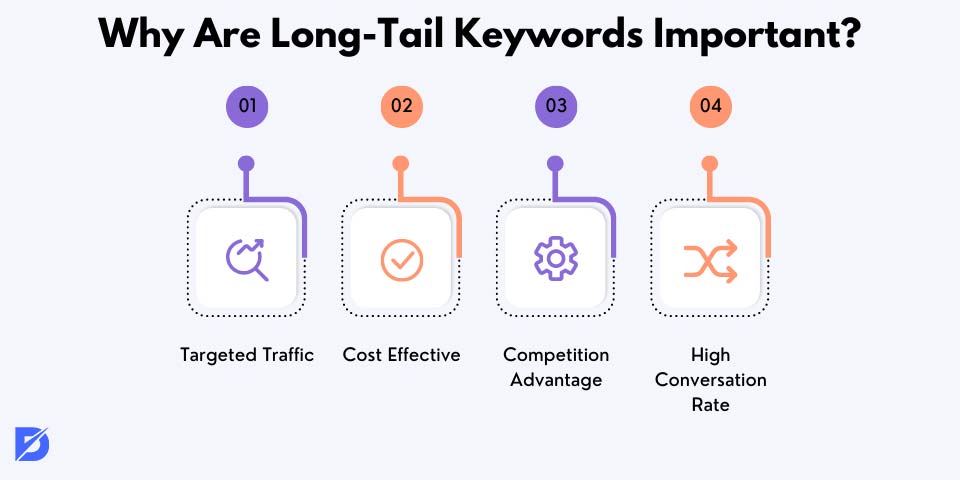
Why Are Long-Tail Keywords Important for My Website?
While reading, you may ask yourself whether long-tail keywords are essential. Well, the answer is “yes!” In fact, incorporating long-tail keyphrases into your SEO strategy can bring a host of benefits and is necessary for several reasons. Let’s see.
Targeted Traffic
First things first. For a successful website, you need traffic, and having the right kind of traffic is so crucial. You do not need just any visitors; you need a targeted audience interested in your online business’s services or goods. So, as we mentioned above, long-tail keywords can narrow down the specific needs of your customer or audience and attract them. These customers are more interested in the service or goods that you offer on your website, and this increases the chances of conversion.
Cost Effective
Once you have a website, you may need long-tail marketing. Using long-tail keywords to drive targeted traffic to a website is the emphasis of the long-tail keyword marketing approach. To give an example, you may want to have paid advertising campaigns, and due to their lower search volume than short-tail keywords, long-tail keywords are frequently less expensive to bid on in those paid advertising campaigns. You can target specific niche phrases and create ads that attract your targeted audience. This is an extremely helpful strategy for small companies with tight advertising budgets. In addition, by doing this, you can improve your click and conversion rates.
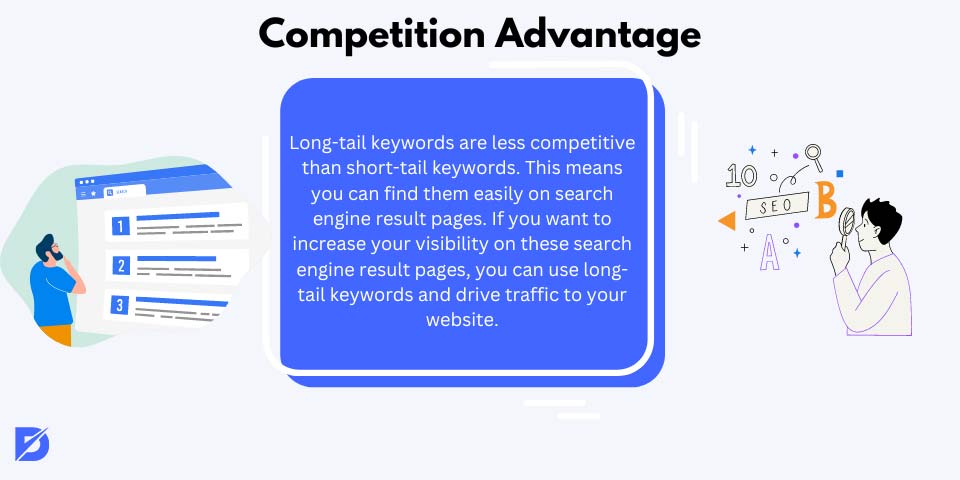
Competition Advantage
You will compete with everyone in your business area in today’s highly competitive online Marketplace. Thus, taking advantage of using long-tail keywords will be one of the best strategies for you, and it can give you an edge over your competitors. Long-tail keywords are less competitive than short-tail keywords. This means you can find them easily on search engine result pages. If you want to increase your visibility on these search engine result pages, you can use long-tail keywords and drive traffic to your website. Also, using the right keywords will make you an authority in your niche and make you stand out from your competitors. By consistently creating high-quality content around your niche phrases, you can show your expertise and build trust with your targeted audience.
High Conversation Rate
These words are typically more specialized and targeted to your customer’s needs; thanks to that, they tend to have higher conversion rates. Unlike general keywords, long-tail keywords offer more detail about what a visitor is searching for. This allows businesses to tailor their content and messaging to meet the specific needs of the visitors better. Using and finding long-tail keywords makes a searcher further along in the sales process and make them more likely to take action.
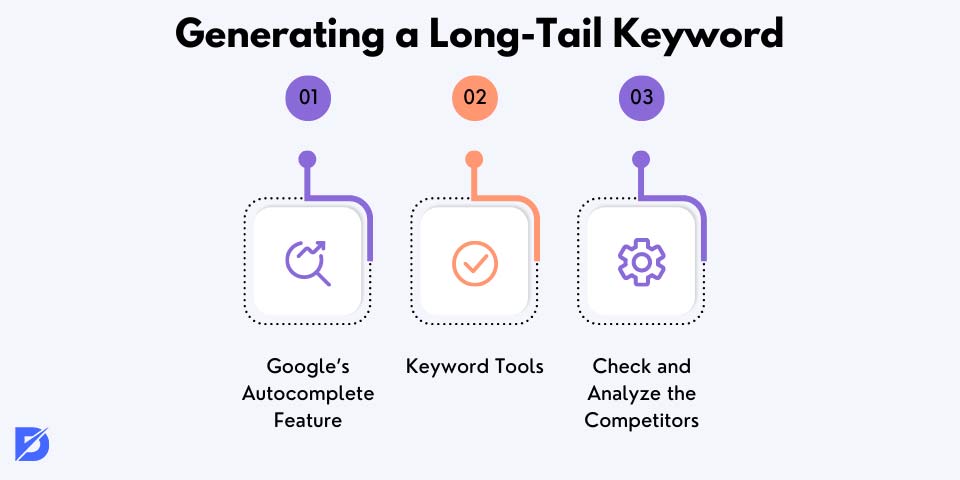
Do Not Be Afraid of Generating a Long-Tail Keyword
If you are a beginner generating a long-tail keyword may seem like a complex process. Well, it is not that hard! There are some strategies to find long-tail keywords and generate them that can make this process much more manageable. Let’s check!
Google’s Autocomplete Feature
This strategy is the simplest one. To find and generate long-tail keywords, you can simply write down your keyword in Google’s search box, and you will see the long-tail keywords people search for. These are the suggestions that Google offers from the data that people search for. They can be used to identify long-tail keywords that are relevant and popular among your targeted visitors. Think carefully about the keywords you use to start your search. They must be highly relevant to your industry or the business area.
Keyword Tools
As in other sectors, technology is with us! There are long-tail keyword tools that you can use and find online. These SEO tools use advanced algorithms and data analysis to provide a list of long-tail keyphrases. For instance, Google Keyword Planner, which is the most widely used tool, and Ubersuggest, or Ahrefs, are some of the tools that you can use. Don’t forget to check the free SEO tools too!
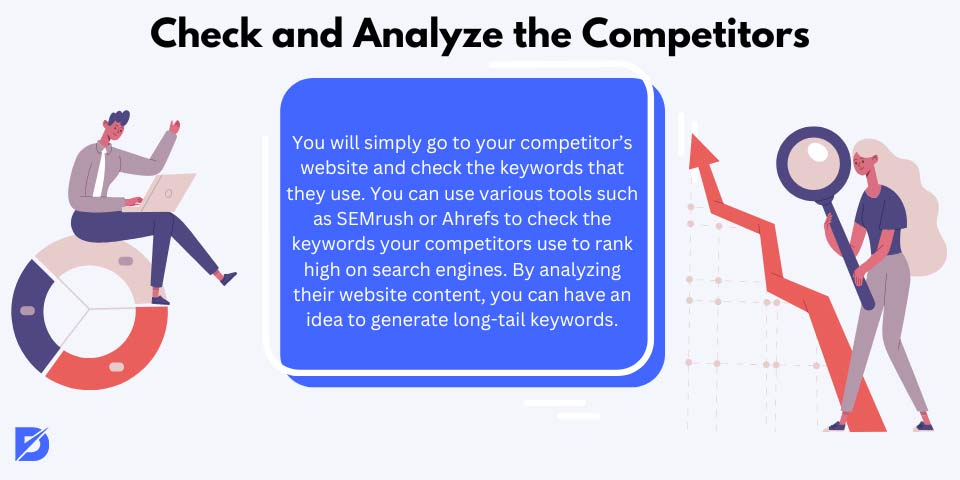
Check and Analyze the Competitors
This one is easy. You will simply go to your competitor’s website and check the keywords that they use. You can use various tools such as SEMrush or Ahrefs to check the keywords your competitors use to rank high on search engines. By analyzing their website content, you can have an idea to generate long-tail keywords. Remember, you should not copy your competitor’s keywords or content directly. You can use this information to create unique content for your audience only. You can also use Dopinger’s Keyword Rank Checker and SEO Competitor Analysis tool to check on your competitors for free!
Congrats! After these three steps, you have a list of long-tail keywords! You are not done yet! Now, you need to narrow down the long-tail keyword research to determine which are worth targeting. This can be done by analyzing the search volume and competition level of each keyword. To do this, you can use a keyword research tool. It is best to try to have keywords with higher research volume and lower competitive ones. Tools like Ahrefs and Moz can be helpful in determining the competition level for each keyword. Remember, targeting the long-tail keywords that are not relevant to your business will lower the traffic to your website and poor conversion rates. It is best to focus on long-tail keywords that accurately reflect your website’s products or services.
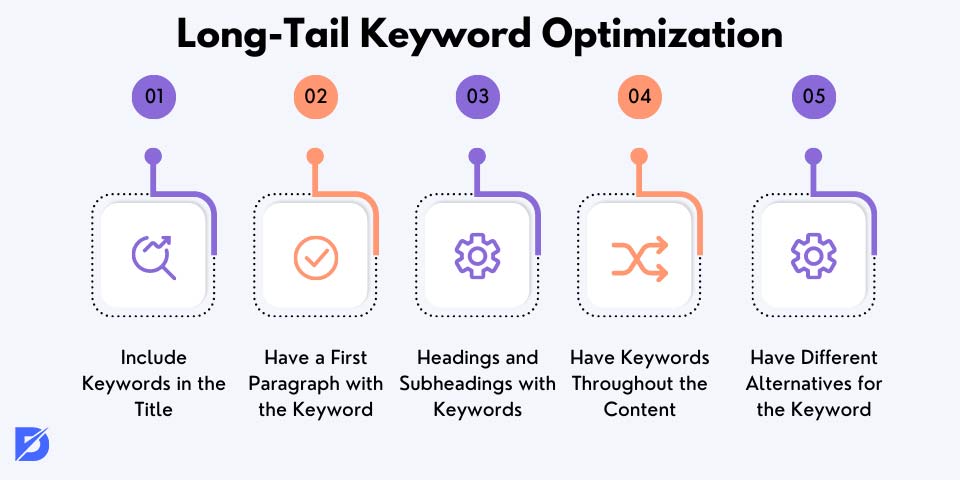
SEO Long-Tail Words: Long-Tail Keyword Optimization
As we mentioned before, having content that is relevant to your niche is essential. Once you have identified the long-tail keywords that you want to target, you can optimize your content to rank for them in search engine results. Here are some tips to help you optimize your content for long-tail keywords.
Include Keywords in the Title
The title of the content is one of the main elements that reflect the main theme of the content. It is also the most critical component for search engines to determine the relevance of your content. By including the long-tail keyword in the title, you will help the search engines to understand what your content is about and improve your chances of ranking them.
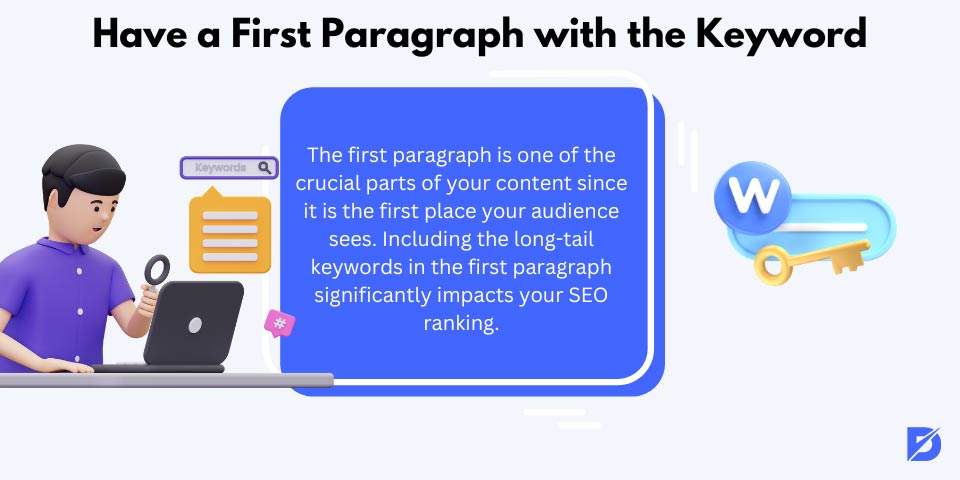
Have a First Paragraph with the Keyword
The first paragraph is one of the crucial parts of your content since it is the first place your audience sees. Including the long-tail keywords in the first paragraph significantly impacts your SEO ranking. By doing this, you can have a higher content rank on search engine result pages. Remember to avoid cramming too many keywords into your content to manipulate search engine rankings. This will hurt your SEO ranking since the search engines can prioritize quality content that is natural and readable rather than content that is full of keywords.
Headings and Subheadings with Keywords
This includes the same logic as having keywords in the title. Incorporate long-tail keyphrases in headings and subheadings to break up your content and make it easier to read. You can also signal to search engines that your content is relevant to the keywords.
Have Keywords Throughout the Content
Search engines use algorithms to determine the relevance and quality of a web page based on its content. The placement of the keywords is one of the key factors they consider. So, without overdoing it, using the long-tail keyword throughout your content may help search engines understand what your content is about. If you stuff your content with too many keywords, you will harm your SEO and make it seem spammy. Focus on creating high-quality content that seems natural and incorporates your keywords.
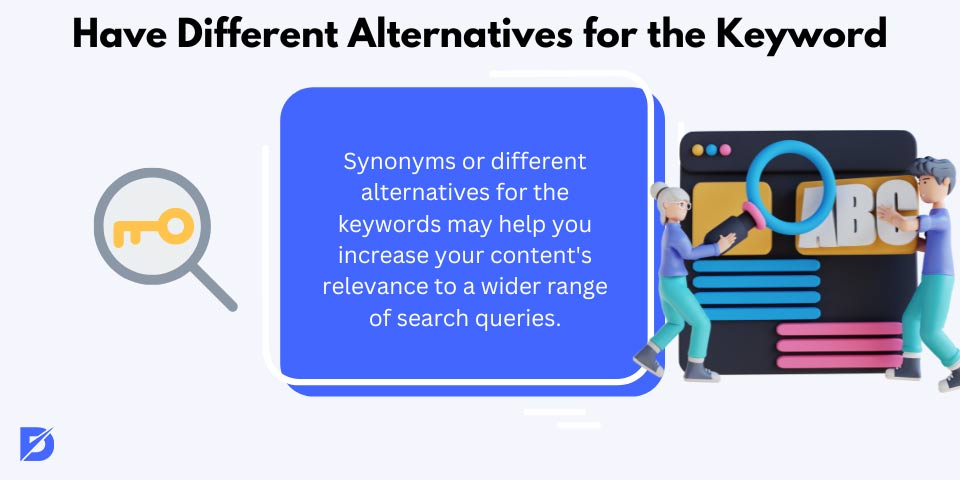
Have Different Alternatives for the Keyword
Synonyms or different alternatives for the keywords may help you increase your content’s relevance to a wider range of search queries.
Remember, your goal is to create qualified contents that are relevant to the keywords. You can apply these tips and optimize your content for long-tail keyphrases. By following these steps, you may improve your chances of ranking for long-tail keywords in search engine results.
Conclusion of How to Rank for Long-Tail Keywords
Taking traffic to your website reveals the question of how to rank for long-tail keywords. By following the steps of this article, you will be able to drive traffic from a specific audience and become an authority in your niche content. Additionally, you will be able to write optimized content with long-tail keywords that resulting high rankings in search engines.
Frequently Asked Questions About
Yes, long-tail keywords are easier to rank than general keywords. The reason is that they are more specific and targeted. This means there is typically less competition for those keywords. This results in achieving a higher ranking in search engine results for a long-tail keyword than for a general keyword.
Optimizing your content for keywords is a crucial process. So, to successfully optimize your content for long-tail keywords, you can write them throughout your content and incorporate them naturally. Titles, subheadings, and headings should include keywords. Also, you can use variations of your long-tail keywords in your content. Remember to avoid overusing them to avoid being spammy and unnatural.
It depends on various factors, such as the quality of your content, the competitiveness of the keyword, and the strength of your website’s SEO. It can take a couple of weeks or months to see results, in general. However, if you want to speed up the process, you can focus on creating high-quality content and building backlinks.
Keyword research tools come to the stage to help to choose the right-long tail keyword to target. So, you can look for keywords with high search volume and low competition. Using popular keyword research tools, you can find keywords that align with your content and target audience.
In general, there is no exact rule; however, we can suggest avoiding using too many long-tail keywords. It is better to start with a few long-tail keywords. Remember, these words must be highly relevant to your content. As your website gains authority day by day and you will be more comfortable with your SEO, so you will be able to target more long-tail keywords.





No comments to show.